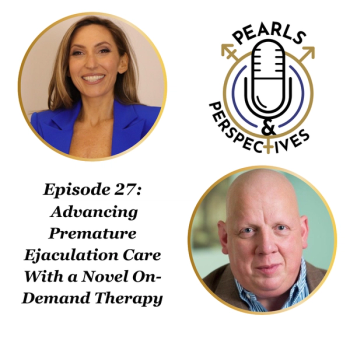
Dr. Rachel Pope on genitourinary syndrome of menopause and HSDD medications

“I would just burn it into everyone's brain that pain with intercourse is also going to be associated with genitourinary syndrome of menopause,” says Rachel Pope, MD, MPH.
In this video, Rachel Pope, MD, MPH, discusses genitourinary syndrome of menopause and medications for hypoactive sexual desire disorder. Pope is an associate professor of obstetrics and gynecology and director of Female Sexual Health at University Hospitals in Cleveland, Ohio.
Transcript:
[Menopause is] an important life milestone. Menopause is associated with recurrent UTIs [urinary tract infections]. I would just burn it into everyone's brain that pain with intercourse is also going to be associated with genitourinary syndrome of menopause. So if you are seeing a patient for an issue like that, and she thinks it's just about her bladder, just ask her. Normalize it. You could say, "A lot of women who have recurrent UTIs after menopause also notice vaginal dryness. Are you sexually active? Is this keeping you from being sexually active?" I find [it helpful to] put it into that sort of normalizing introduction, so she doesn't think you're presuming that she has a problem. I think that would be wonderful for everyone listening to be able to clue into. Also, clinicians should learn the basic medications for hypoactive sexual desire disorder. We really only have a few options, and I think it would be great if more people were providing them. We have flibanserin [Addyi]; we have bremelanotide [Vyleesi], and we have testosterone. They work for men and women; the studies were done on men and women, but the FDA has approved them for premenopausal women, except for testosterone—that's considered off label for women. It would be good for those listening to look into those medications [and] know that that's something that they could prescribe. They don't have to be a sexual health expert to be able to prescribe those. The risks, benefits, and contraindications are all pretty simple. Just like any new medication when it comes onto the market, we all have to do the reading and learn how to prescribe it. It's great to have those medications in our pocket as well to be able to prescribe to women.
This transcript was edited for clarity.
Newsletter
Stay current with the latest urology news and practice-changing insights — sign up now for the essential updates every urologist needs.


















